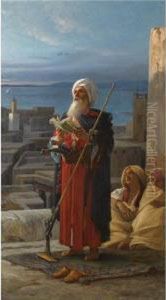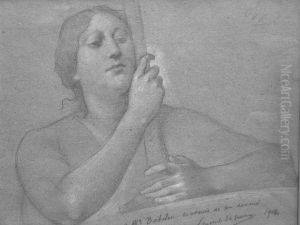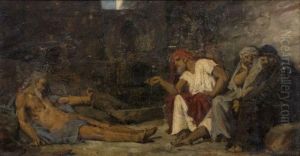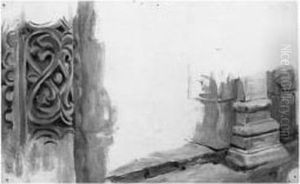Jean-Jules-Antoine Lecomte du Nouy Paintings
Jean-Jules-Antoine Lecomte du Nouy was a French painter and sculptor born on June 10, 1842, in Paris. He is often associated with the academic art movement, which was characterized by a high degree of skill and a traditional approach to painting that emphasized classical themes, realistic representation, and often an idealized view of the subject matter.
Lecomte du Nouy was a student at the prestigious École des Beaux-Arts in Paris where he studied under distinguished teachers such as Charles Gleyre and Jean-Léon Gérôme, who were prominent figures in the French academic tradition. He excelled in his studies and soon began exhibiting his works at the Paris Salon, the official art exhibition of the Académie des Beaux-Arts in Paris. His early works were predominantly orientalist in nature, inspired by his travels to North Africa and the Middle East – regions that were fashionable among European artists of the time for their exotic landscapes and cultures.
Throughout his career, Lecomte du Nouy painted historical and mythological scenes, as well as portraits and religious subjects. His style was characterized by meticulous attention to detail, a mastery of anatomy, and a keen sense of composition. He was known for his ability to capture the textures of fabrics and the interplay of light and shadow, creating works that were admired for their realism and elegance.
His paintings such as 'The White Slave' and 'The Guardian of the Harem', among others, were particularly noted for their portrayal of Orientalist themes with a dramatic and often romantic flair. Such works reflected a Western fascination with the 'Orient', which was conceptualized as a land of mystery and sensuality.
Lecomte du Nouy was awarded numerous honors throughout his career, including a third-class medal at the Salon in 1866, and he was made a Knight of the Legion of Honor in 1876. He continued to exhibit his works widely, and his reputation as a skilled academic painter grew both in France and abroad.
Beyond painting, Lecomte du Nouy also explored sculpture, although he is less known for this aspect of his oeuvre. His sculptures often shared the same classical and historical themes present in his paintings.
Jean-Jules-Antoine Lecomte du Nouy passed away on March 19, 1923, in Paris. His legacy is preserved in the collections of various museums and galleries around the world, where his works continue to be studied and appreciated for their technical proficiency and their reflection of the cultural and artistic trends of his time.






































